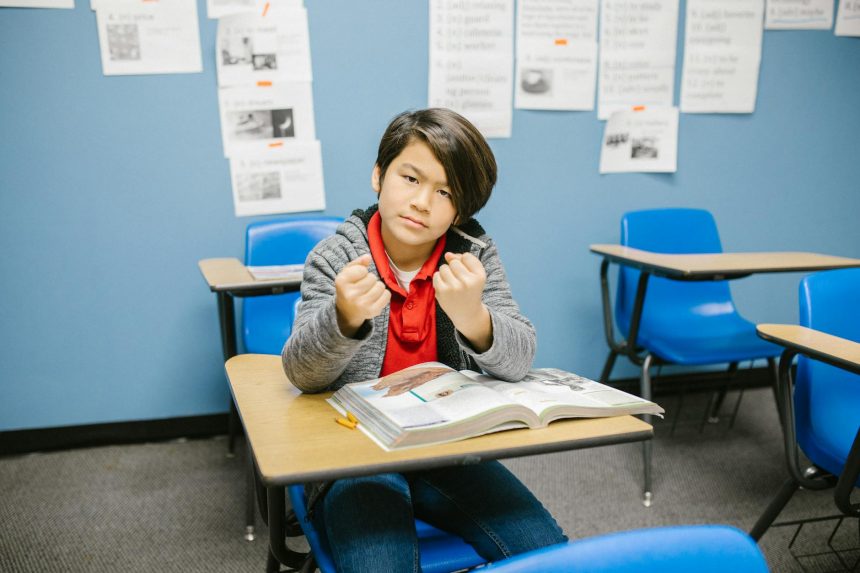School Threat Prevention: 7 Critical Steps for Safer Campuses
The safety of our children within school walls is a paramount concern for every parent, educator, and community member. In an era where news of potential dangers can spread rapidly, understanding how to proactively address and prevent threats is more crucial than ever. The chilling reality of a student making a verbal threat underscores the urgent need for robust School Threat Prevention strategies. This article will explore comprehensive approaches to identify, mitigate, and ultimately avert potential dangers, ensuring our educational institutions remain safe havens for learning and growth.
What Constitutes a School Threat?
A school threat encompasses any verbal, written, or implied communication that suggests harm to students, staff, or the school environment. These threats can range from direct statements of violence to veiled warnings or even concerning social media posts. Recognizing the diverse forms these threats can take is the first step toward effective intervention.
Understanding the Types of Threats
- Direct Threats: Explicit statements of intent to harm, such as “I am going to shoot up the school.”
- Indirect Threats: Vague or suggestive statements that imply harm, like “You’ll be sorry when I get my revenge.”
- Conditional Threats: Threats that depend on a specific condition, e.g., “If you don’t stop, I’ll make you pay.”
- Veiled Threats: Statements that strongly hint at violence but lack explicit language, often leaving the listener to infer the danger.
The Critical Role of Early Intervention in School Threat Prevention
Early intervention is the cornerstone of any successful School Threat Prevention program. Addressing concerning behaviors or statements before they escalate can de-escalate situations and provide necessary support. This proactive approach relies heavily on vigilant observation and a clear understanding of potential warning signs.
Recognizing Warning Signs in Students
Identifying students who may be on a path toward violence requires sensitivity and training. It’s not about profiling, but about recognizing patterns of distress or concerning behaviors that warrant attention and support. These signs can manifest in various ways.
Behavioral Indicators
- Increased social isolation or withdrawal from friends and activities.
- Significant changes in academic performance or attendance.
- Obsession with violence, weapons, or violent media.
- Frequent outbursts of anger, aggression, or irritability.
- Bullying behavior or being a victim of bullying.
- Substance abuse or self-harming behaviors.
- Lack of empathy or disregard for others’ feelings.
Verbal and Written Indicators
Beyond actions, the words students use can offer crucial insights. Paying attention to what is said and written is vital.
- Direct or indirect threats of violence, as discussed above.
- Expressing feelings of hopelessness, despair, or suicidal ideation.
- Glorifying past acts of violence or expressing admiration for perpetrators.
- Making specific plans or detailed fantasies about harming others.
- Writing or drawing violent themes, especially when unusual for the student.
Comprehensive Strategies for Effective School Threat Prevention
Implementing a multi-faceted approach is essential for robust School Threat Prevention. This involves creating a supportive environment, establishing clear protocols, and engaging the entire school community. No single strategy can guarantee complete safety, but a combination significantly reduces risks.
Establishing Robust Reporting Systems
Students, staff, and parents must have clear, accessible, and anonymous ways to report concerns. Fear of retaliation or not being taken seriously often prevents individuals from coming forward. Confidential tip lines, online reporting forms, and designated trusted adults can facilitate this process. For instance, the U.S. Secret Service National Threat Assessment Center provides valuable insights on effective reporting and threat assessment.
Implementing Threat Assessment Teams
Trained multidisciplinary teams are crucial for evaluating reported threats. These teams typically include administrators, counselors, school psychologists, and law enforcement. Their role is to assess the credibility and severity of a threat, identify underlying issues, and develop intervention plans. This systematic approach ensures consistent and appropriate responses.
Fostering a Culture of Open Communication
An environment where students feel safe to confide in adults is invaluable. Educators and staff should be trained to build rapport with students, recognizing that many at-risk individuals may feel isolated. Open dialogue about mental health, conflict resolution, and the importance of speaking up can break down barriers.
Engaging Parents and the Community
School safety is a shared responsibility. Parents are often the first to notice changes in their child’s behavior and should be empowered to communicate concerns without fear of judgment. Community partnerships with local law enforcement, mental health services, and youth organizations strengthen the support network available to schools.
Legal Ramifications and Support Systems
Understanding the consequences of making threats and the support available is crucial for both students and their families. While accountability is important, so is providing pathways for rehabilitation and mental health support.
Consequences of Making Threats
Students who make threats, even if not acted upon, can face severe consequences. These may include school disciplinary actions such as suspension or expulsion, and in more serious cases, legal charges. Law enforcement takes all threats seriously, and the intent behind a statement does not always negate its potential impact or the legal response. Education about these consequences can serve as a deterrent.
Resources for Students and Families
For students exhibiting concerning behaviors, or families grappling with these issues, numerous resources exist. School counselors, psychologists, and social workers are primary points of contact. Additionally, community mental health services, crisis hotlines, and organizations specializing in youth support can provide professional help. The SAMHSA National Helpline is an excellent resource for finding mental health and substance abuse treatment services.
Conclusion: A Collective Commitment to Safer Schools
The journey towards absolute school safety is ongoing, requiring vigilance, compassion, and a unified effort. By prioritizing School Threat Prevention through early intervention, robust reporting, comprehensive assessment, and community engagement, we can build environments where students feel secure, supported, and free to learn. Every reported concern, every conversation, and every proactive measure contributes to a safer future for our educational communities.
By working together, we can ensure our schools remain safe havens for learning and growth. Share this article to spread awareness and empower your community in the vital mission of school safety.
Featured image provided by Pexels — photo by RDNE Stock project








